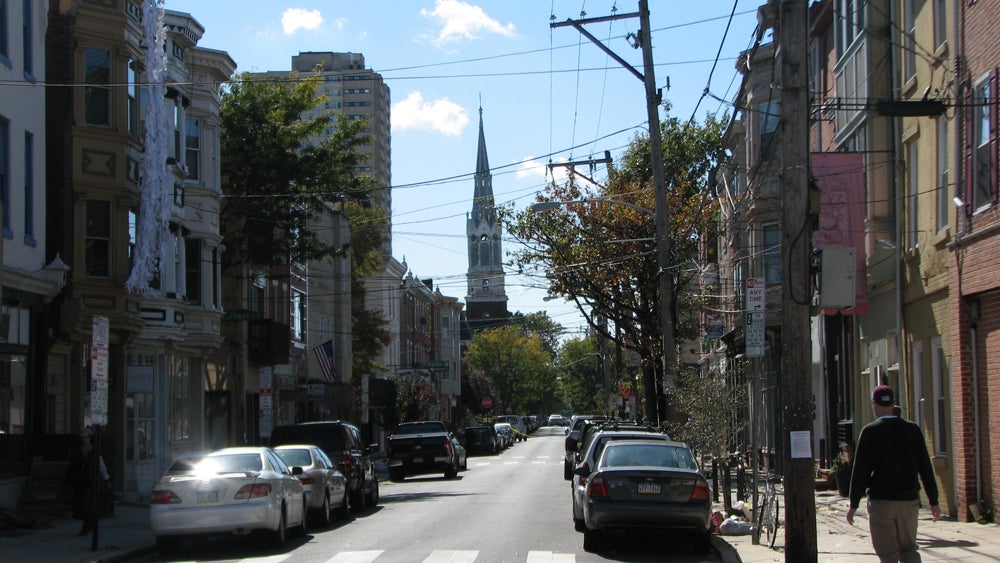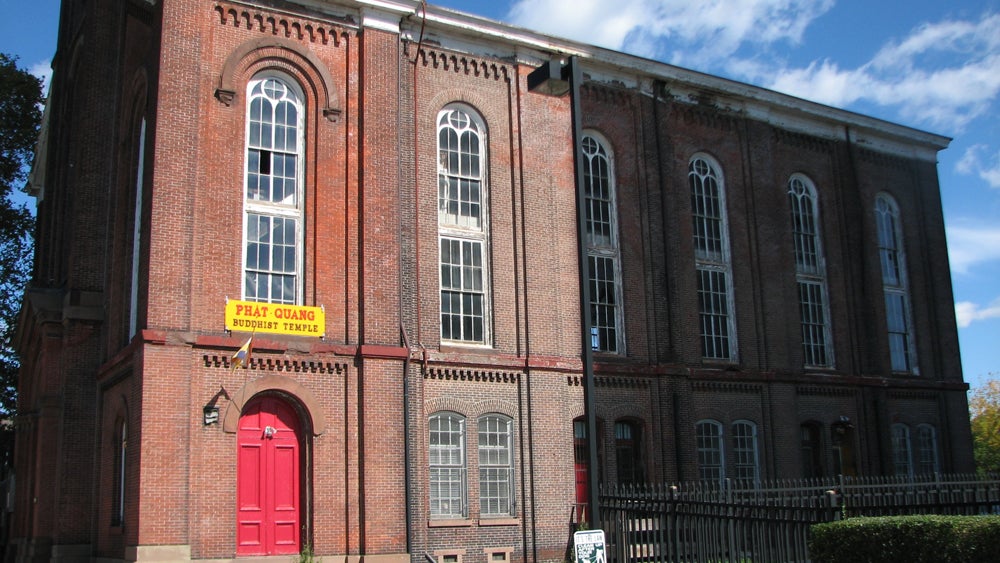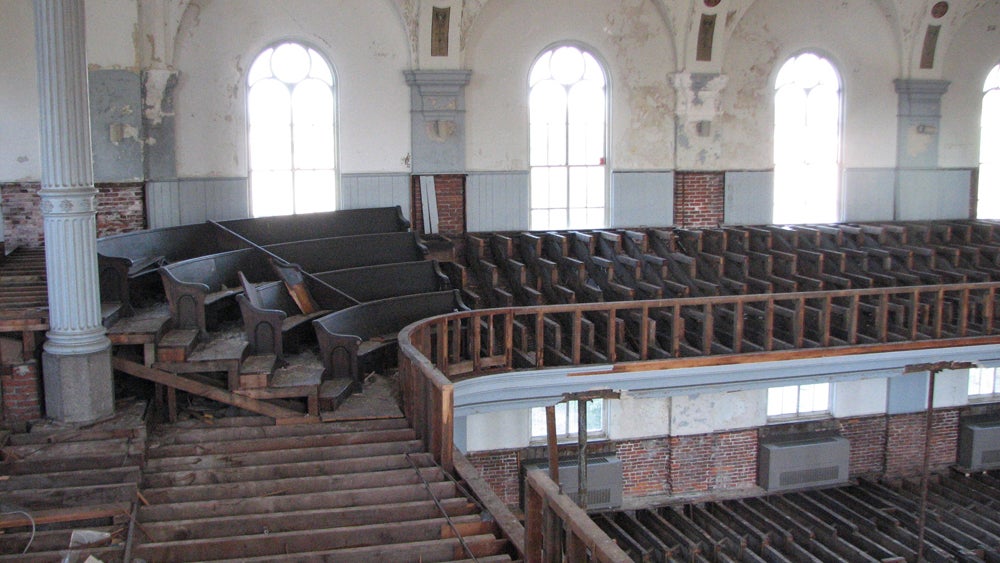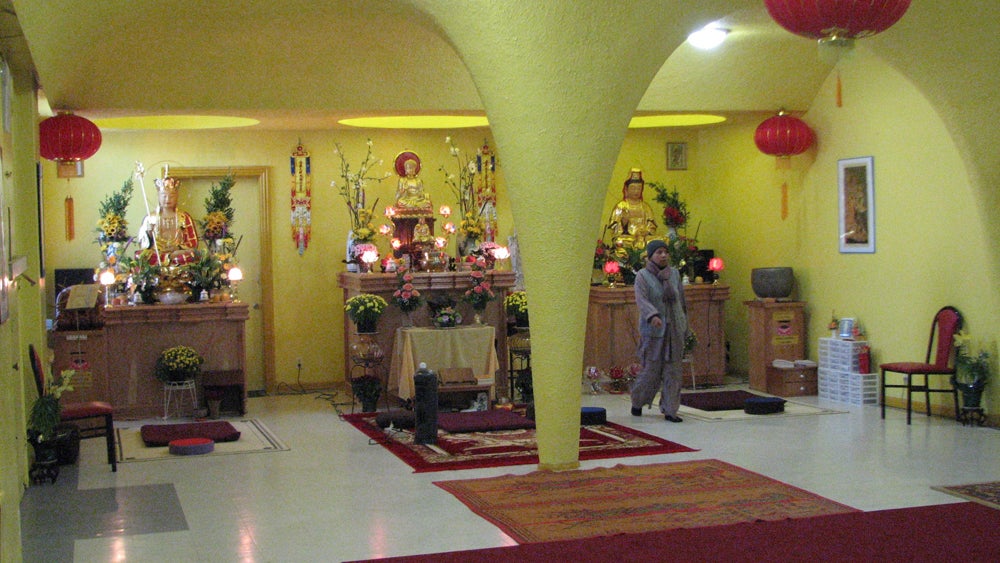Preservation Row: New life for landmark church in South Philadelphia
While the struggle continues over the future of the Church of the Assumption in Callowhill, another distinctive religious building appears to have a much brighter horizon. The Emanuel Evangelical Lutheran Church in South Philadelphia is in the midst of growing from its German roots into a Vietnamese Buddhist temple.
The building at 1001 S. 4th St. is a longtime landmark in the neighborhood and was once a beacon for ships sailing up the Delaware. The cornerstone dates its birth to July 29,1868. According to the Lutheran congregation’s archive, the brick and wood church, parsonage and Berlin-built clock cost $97,859.28.
After World War II, the German-language services were switched to English, and the congregation dwindled as families moved to other parts of the city. Michael Schreiber, a member of the historic preservation committee of the Queen Village Neighbors Association, said the remaining congregation moved into the church basement but retained a deep commitment to the neighborhood. Social service and community groups used the building, and it served as a center for visiting sailors from around the world.
In the early 1960s, a $90,000 restoration included rebuilding the nave and chancel and repainting the interior and exterior of the beautiful wood clock tower. A renovated 1840 organ was installed, and the original clock was repaired.
The congregation continued to diminish, however, and two years ago they abandoned the church.The Berlin clock was removed, leaving holes in the tower. The building deteriorated and windows were vandalized, Schreiber said.
The Philadelphia Historical Commission stepped in last January, filing a petition in the Court of Common Pleas asking that it order the Lutheran Synod and the congregation to repair the masonry and roofing and seal the holes left by the clock. An inspection by the Department of Licenses & Inspection found the main floor of the church had been taken up and that the building was unsafe.
“Both the Synod and the congregation took it upon themselves to solve the problems and they were very cooperative,” said Jonathan Farnham, executive director of the Historical Commission. The commission suggested that the congregation seek a new owner for the building. “We were surprised to learn that within a month or so, they said they found a Buddhist group interested in purchasing the church.”
Commission members have talked with the leaders of the renamed Phat Quang Buddhist Temple about bringing the church into compliance with the building code. “They’ve indicated they are willing and able to do the work,” Farnham said.
The church building was designated for listing on the Philadelphia Register of Historic Places in 1963 and is representative of the mid-19th century German community, Farnham said. The commission has no information on the architect or builder of the church, but “it has both architectural and social cultural significance as an indication of the German community that lived in that area.”
The building will now serve the burgeoning Vietnamese community in South Philadelphia. Dr. Anh Ly, a dentist from the neighborhood who is taking an active role in helping the new Buddhist congregation, said the temple actually will serve the larger Vietnamese community in the surrounding suburbs and stretching as far as Reading, New York and Maryland.
The new temple is being led by two monks and a nun from Vietnam who previously led a congregation in Pittsburgh, explained Ly. They wanted to serve the large concentration of Vietnamese in the Philadelphia area and “by pure luck acquired the building” on 4th Street.
But the building came with unfortunate problems. In addition to the flooring, the previous congregation removed most of the pews in the church, along with posts and other infrastructure. The Lutheran congregation will replace some of the flooring, Ly said. The former owners have also allowed the new congregation extra time to pay off the purchase of the building. “There is no way to get a loan from a bank to buy a building in this condition,” Ly said.
“The building still needs a lot of repairs, and we do not have the funds,” she said. “In the very near future, we have to do some fundraising. We’re looking into ways to raise money to first pay off the building.”
Ly said the congregation has not received an official estimate for the cost of the total restoration of the building.
But the physical transformation of the interior has begun. Members of the still small congregation are volunteering time, labor and a variety of skills – cleaning, painting, carpentry, “they donate whatever they have” — to restore the structure, Ly said. Brightly colored Buddhist flags and the temple’s sign hang on the outside of the 19th-century building, and renovated office and kitchen areas are being used by the congregants.
Gentle music and the scent of incense fill the sacred space already created on the first floor of the former church, a room of yellow arches and beautifully decorated Buddhist statues and shrines.
And on the second-floor former sanctuary, though stripped of flooring and benches and pocked with holes in the ceiling, the new congregants see the potential for a magnificent rebirth.
Contact the writer at ajaffe@planphilly.com.
WHYY is your source for fact-based, in-depth journalism and information. As a nonprofit organization, we rely on financial support from readers like you. Please give today.














